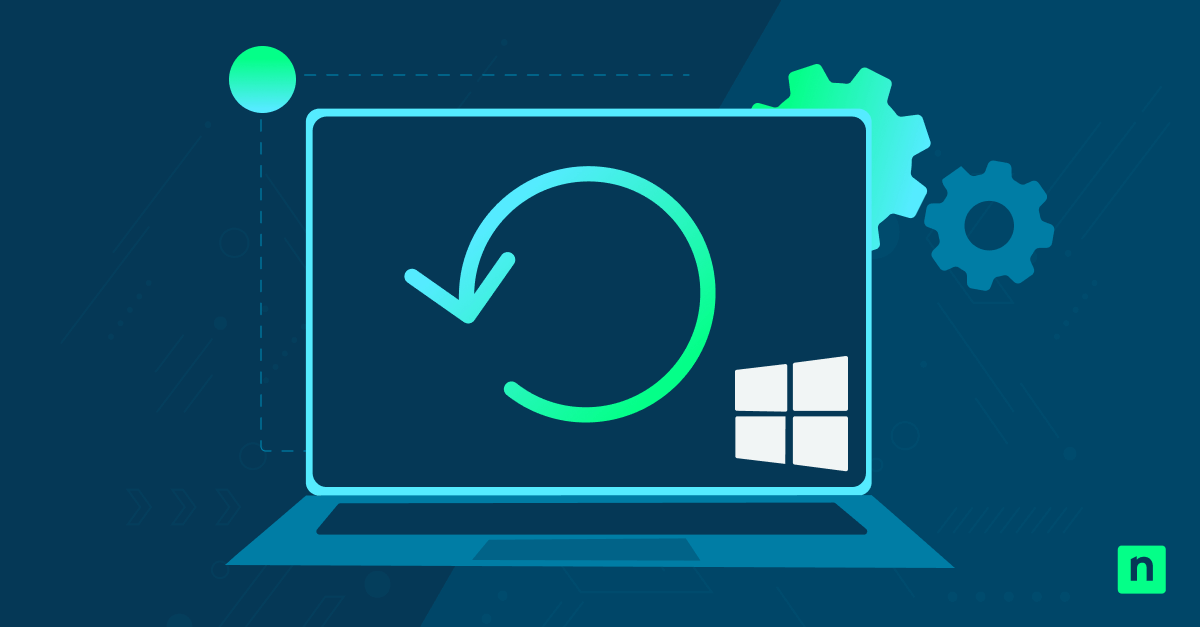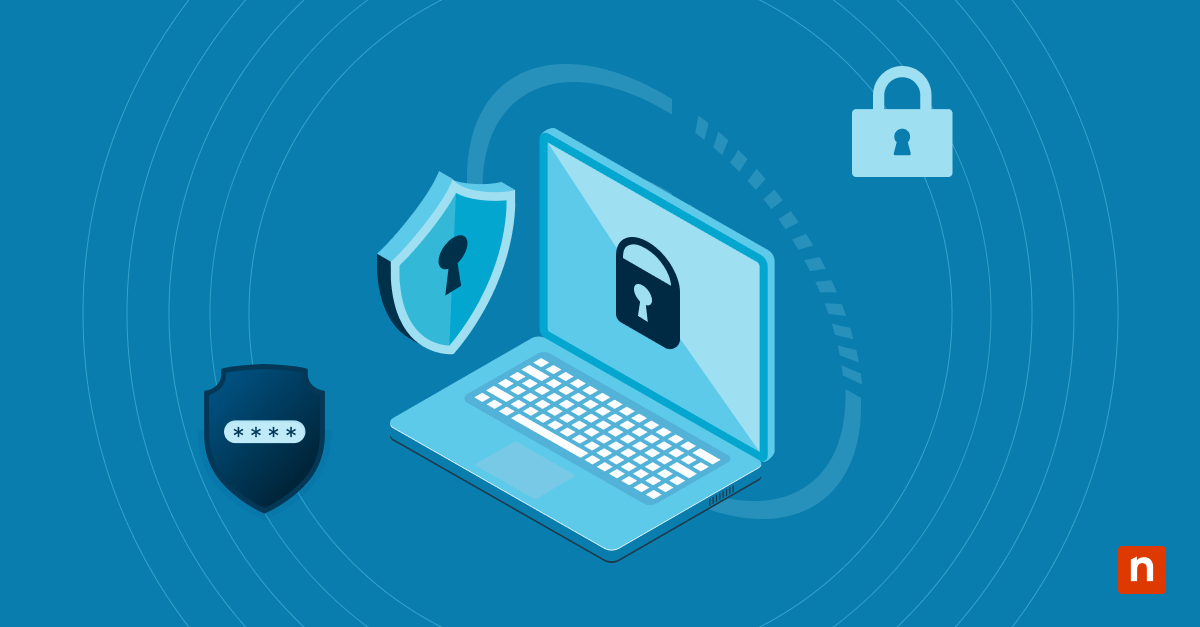Determining the optimal number of IT staff is a challenge that significantly impacts a company’s efficiency, security, and ability to innovate. IT staffing ratios—representing the proportion of IT personnel relative to end-users or devices—serve as vital metrics in this assessment.
This guide delves into the intricacies of IT staffing ratios, offering insights to help businesses and IT leaders assess their staffing needs based on organizational size, industry specifics, and IT infrastructure complexity. Understanding and optimizing IT staffing levels ensures technical issues are promptly addressed, minimizing downtime and maintaining productivity.
If you’re looking to onboard more IT staff, check out this guide on training new IT employees.
What are IT staffing ratios?
An IT staffing ratio is a metric used to determine the optimal number of IT staff needed to support an organization’s technological infrastructure. This ratio helps organizations align their IT capabilities with operational needs, ensuring that the IT department is neither overburdened nor underutilized. At its most basic, it’s calculated by dividing the number of IT employees by the number of end-users or devices they support. As we will show, however, it’s not that simple – and might be missing the point, or asking the wrong questions.
Different IT staffing models cater to various organizational structures and goals. A centralized IT model consolidates all IT resources within a single department, promoting consistency in policies and procedures. This approach is often favored by organizations seeking uniformity across all divisions. Conversely, a decentralized IT model distributes IT staff across different departments or locations, allowing for specialized support tailored to specific needs. This can enhance responsiveness but may lead to data silos and inconsistencies in practices. Understanding these models helps organizations choose a structure that best aligns with their strategic objectives.
Factors influencing IT staffing needs
Several critical factors influence how many IT staff an organization requires. Company size and industry play significant roles. Larger enterprises naturally need more IT personnel due to a higher number of users and more complex systems. For example, a multinational corporation in the finance sector will have different staffing needs compared to a small local business in retail.
Other key determinants include:
Complexity of IT infrastructure
As an organization’s IT infrastructure grows in complexity—whether through the expansion of networks, the addition of servers, or the deployment of more applications—the need for specialized IT staff becomes paramount. With each new component, the attack surface for potential security breaches increases, demanding more robust monitoring, patch management, and security protocols. This complexity introduces not just technical challenges but also increased risk. As more systems and users come online, the chances of misconfigurations, outdated software, or overlooked vulnerabilities grow, making the organization more susceptible to cyberattacks.
Additionally, as the company becomes more economically successful, it may inadvertently become a more attractive target for cybercriminals. Organized crime groups and state-sponsored actors often focus their efforts on companies that not only have more assets to steal but also more to lose in terms of reputation and customer trust. A company’s financial growth and market visibility can increase its exposure, making it imperative to scale its IT team not just in numbers but also in expertise to defend against sophisticated and persistent threats.
Growth plans and scalability considerations
Organizations anticipating economic growth must ensure their IT infrastructure can scale to meet both operational demands and the increased security threats that accompany such expansion. While growth often brings the challenge of managing more users, data, and technology, it also places the company in the crosshairs of more advanced cybercriminals. As the company expands its market presence, it becomes a higher-value target, attracting not only opportunistic hackers but also organized cybercriminal syndicates and sophisticated phishing campaigns.
This growing threat landscape means IT staffing needs to scale not only to manage day-to-day operational demands but also to maintain a proactive security posture. Without the necessary staff to implement advanced cybersecurity measures, businesses risk becoming overwhelmed by increasingly sophisticated attacks. Failure to anticipate these staffing needs can result in severe breaches that not only disrupt operations but also cause long-lasting reputational and financial damage. Having a well-staffed and skilled IT team is therefore not just a technical necessity but a vital investment in the company’s long-term security and stability.
Management goals
Ensuring that IT staffing aligns with management’s strategic objectives is crucial. If an organization hires the bare minimum of IT staff, it may initially seem like an efficient cost-saving measure. However, this approach can quickly lead to significant challenges. Understaffed teams face excessive workloads, which often results in employee burnout, higher turnover rates, and decreased productivity. These stressed teams are more prone to mistakes, which can lead to system outages, security vulnerabilities, and data breaches. Poor user experiences follow, as IT teams struggle to maintain service levels, directly impacting customer trust and satisfaction.
Over time, these operational inefficiencies and security risks can erode customer confidence, leading to lost business and a damaged reputation. The financial implications are severe—not only through lost profits but also due to the costs of rectifying security breaches and the potential for regulatory fines. Worse yet, as the organization continues to underperform and fall behind in technological innovation, it risks losing its competitive edge in its industry, paving the way for even deeper challenges to sustainability.
Calculating the right IT staffing ratio for your business
Determining the optimal IT staffing ratio involves a thoughtful analysis of your organization’s specific circumstances. Begin by assessing your current IT environment:
- Inventory your IT assets: Catalog all hardware, software, networks, and devices.
- Evaluate workloads: Understand the volume and complexity of tasks your IT staff handles.
- Consider user needs: Account for the number of end-users and their reliance on IT services.
Next, align your staffing needs with business objectives. If your company plans to expand or adopt new technologies, your IT team must be equipped to support these initiatives. Utilize tools and methodologies like benchmarking against industry standards or employing workload analysis software to inform your calculations.
Finally, ensure that your IT staffing aligns with broader company goals. For instance, if customer service is a priority, adequate IT support is essential for maintaining systems that facilitate client interactions; if security is a priority, adequate IT training for non-IT staff can be crucial. Regularly revisiting this assessment helps adapt staffing levels to evolving business needs.
Common IT staffing ratios
Understanding industry benchmarks for IT staffing ratios can provide valuable context. In general business environments, a typical ratio might be one IT staff member per 50 to 75 end-users. However, technology-intensive industries often have lower ratios due to higher demands on IT resources. For instance, a tech company might operate with a ratio of 1:25 to ensure adequate support for complex systems. Comparing ratios across different industries and company sizes reveals trends that can guide staffing decisions. For example, small businesses might function effectively with higher ratios, such as 1:100, by leveraging managed services or outsourcing. In contrast, enterprises with a critical reliance on technology might require more robust in-house teams.
Impact of understaffing and overstaffing in IT
Impact of understaffing
- Increased downtime: Overburdened staff may struggle to keep up with support requests, leading to delays in resolving issues.
- Delayed updates: Critical updates or security patches might be postponed, increasing vulnerability to cyber threats.
- Employee burnout: Staff dealing with excessive workloads may experience burnout, leading to higher turnover rates and further staffing challenges.
Impact of overstaffing
- Strained financial resources: Excess personnel can lead to unnecessary costs without corresponding improvements in productivity.
- Inefficiencies: Too many staff may cause overlap in responsibilities, leading to redundancy and unclear task ownership.
- Rarity of overstaffing: Overstaffing is rare in practice, as modern management trends tend to emphasize lean staffing models, exacerbating the burnout problem.
Solutions
- Regular assessments: Organizations should regularly review IT workloads and performance metrics to fine-tune staffing levels.
- Flexible staffing: Temporary hires or contractors can help manage workload fluctuations during peak periods without long-term commitment.
Best practices for IT staffing
Optimizing IT staffing involves strategic planning and ongoing management. Cross-training employees enhances team versatility, allowing staff to cover multiple roles as needed. This flexibility is invaluable during absences or peak demand periods. Encouraging specialization, however, ensures that complex areas like cybersecurity or network architecture have dedicated experts.
Maintaining flexibility extends beyond staffing levels. Embracing agile methodologies and staying open to adopting new technologies can improve responsiveness to changing business needs. Investing in continuous training, upskilling, and cross-departmental training is equally important. As technology evolves rapidly, keeping your IT team’s skills current is essential for maintaining operational efficiency and fostering innovation.
Reduce complexity & help your IT team be more productive by leveraging NinjaOne’s endpoint management software for IT professionals.
Future trends in IT staffing
Emerging technologies are reshaping the landscape of IT staffing. Automation and artificial intelligence are taking over routine tasks, potentially reducing the need for certain roles while increasing demand for specialists who can manage these advanced systems. Cloud computing continues to grow, requiring expertise in cloud infrastructure and services.
The rise of remote work has significant implications. IT departments must now support a distributed workforce, ensuring secure and reliable access to organizational resources from various locations. This shift may lead to new staffing models, including remote IT support teams and global talent acquisition. Looking ahead, organizations may place greater emphasis on hybrid skill sets – professionals who combine technical expertise with business acumen. This blend enables IT departments to contribute more strategically to organizational goals. Adapting to these trends is vital for maintaining a competitive edge.
IT Staffing ratio FAQs
Can outsourcing replace in-house IT staff?
While outsourcing can supplement an IT department, particularly for specialized skills or cost savings, it typically can never fully replace the need for in-house staff. Internal teams possess crucial institutional knowledge and are better positioned to respond quickly to immediate issues and align IT initiatives with company culture and objectives. Outsourcing works best for routine tasks or temporary projects but lacks the deep integration needed for strategic long-term planning. Furthermore, in-house staff are essential for maintaining security and compliance with industry-specific regulations.
What are the signs that our IT department is understaffed?
Indicators of understaffing include frequent system downtime, slow response to support requests, delays in project completion, and signs of employee burnout within the IT team. Regular feedback from end-users and performance metrics can help identify these issues. Additionally, over-reliance on a few key individuals, coupled with a lack of redundancy for critical skills, can signal insufficient staffing levels. If IT personnel struggle to keep up with regular maintenance tasks while delaying strategic initiatives, it’s a strong indication that more resources are needed.
How often should IT staffing levels be reviewed?
It’s advisable to review IT staffing levels annually or in response to significant changes within the organization, such as mergers, acquisitions, or the implementation of major new technologies. Regular reviews help ensure that staffing aligns with current needs and future plans. Additionally, assessing IT workloads and technology trends throughout the year can help fine-tune staffing levels before they become critical issues. Proactive reviews also allow businesses to plan for growth, ensuring that they aren’t caught off guard by sudden increases in demand.
Investing in technology and the people behind it
Determining the right IT staffing ratio is a dynamic process that requires careful consideration of various factors unique to your organization. By understanding the influences on staffing needs and implementing best practices, you can optimize your IT department to support your business effectively. Regular evaluation and adaptation are essential, particularly as technology and business environments continue to evolve rapidly.








